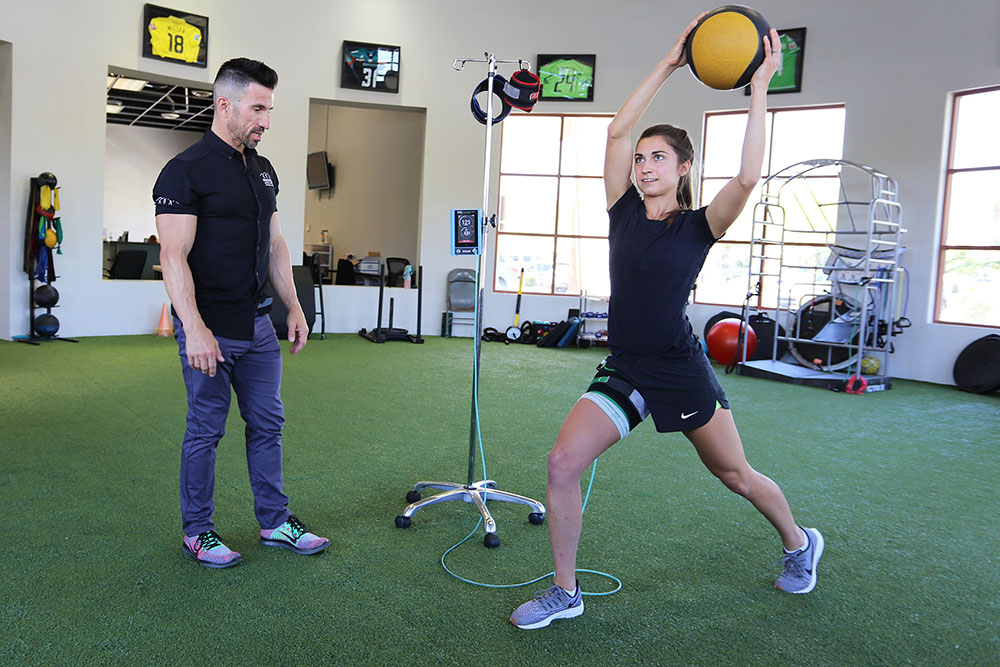Have you ever witnessed a woman in her third trimester jogging along the street, or even running in a marathon, and wondered to yourself, “is that really safe?”
There are many physical and hormonal changes that occur during pregnancy. Despite all these changes, women with uncomplicated pregnancies can and should be exercising—even running. Studies have shown that fitness levels can be maintained during pregnancy with moderate intensity exercise, and without detriment to mother or baby. Of course, you should always talk to your doctor before beginning a new exercise routine.
The following physical adaptations occur during pregnancy, many of which will have implications with regard to an appropriate exercise program:
- Cardiovascular changes include an increase in resting heart rate and cardiac output, as well as lower extremity venous pressure.
- Hormonal differences include an increase in relaxin, estrogen, and progesterone, which lend to ligamentous laxity and may contribute to low back or pelvic pain. Hormonal changes may also cause an elevated basal body temperature, contributing to overheating.
- Musculoskeletal changes include decreased abdominal control, postural modifications such as increased lumbar lordosis, and decreased balance and arch height.
The health of a mother and her baby is always the primary concern when considering an exercise program during pregnancy. Physical therapy professionals can assist with appropriate exercise instruction in conjunction with the doctor overseeing a pregnant woman’s care.
Appropriate guidelines should be followed in regard to frequency, intensity and duration of an exercise program. Healthy mothers can exercise for 30-60 minutes up to 3-5 times a week, including a variety of aerobic activity and strength training activities. Exercises lying on the back are not advised after the first trimester. Care should also be taken regarding the type of activity performed during the later stages of pregnancy due to decreased balance and coordination. Furthermore, activities that stress oxygen uptake such as mountain climbing, scuba diving, or activity at high altitude should be avoided.
Moderate exercise intensity can be monitored several ways:
- Heart rate: (guidelines are based on the age of the mother)
- <20 years: 140-155 bpm
- 20-29 years: 135-150 bpm
- 30-39 years: 130-145 bpm
- >40 years: 125-140 bpm.
- Borg Rating of Perceived Exertion: This is a scale that measures how hard you feel you’re working. The scale ranges from 6 =no exertion to 20=maximal exertion. A rating of 12-14 would indicate moderate intensity of exertion.
- Talk test: This is a simple way to measure relative intensity. For example, being able to talk but perhaps not sing would be a good indicator of moderate intensity level.
General benefits of continued exercise during pregnancy are numerous. They include the following:
- Decreased risk of hypertension
- Decreased risk of Gestational Diabetes
- Decreased weight gain
- Decreased nausea
- Improved mood and energy
Continued exercise during an uncomplicated pregnancy has been shown to have great benefits but, as with anything, there are also risks. Exercise during pregnancy should be stopped if a mother exhibits any of the following warning signs:
- Vaginal bleeding, shortness of breath prior to exercise, dizziness, headaches, chest pain or muscle weakness
- Calf pain or swelling
- Preterm labor
- Decreased fetal movement
- Amniotic fluid leakage
Any questions or concerns regarding an exercise program during pregnancy can be addressed with your doctor and/or physical therapy expert. If you would like to know more about pregnancy safe exercises, please contact your local Foothills Sports Medicine Physical Therapy clinic!




